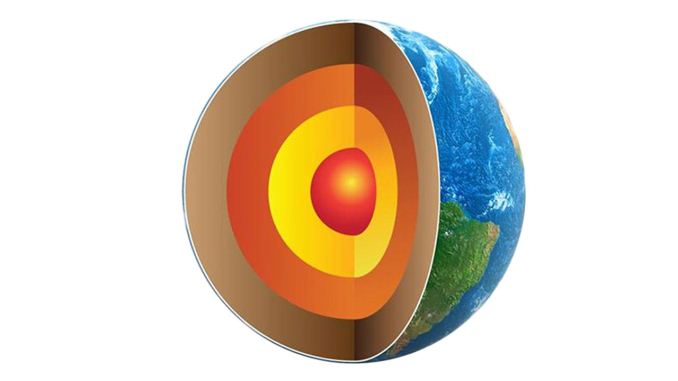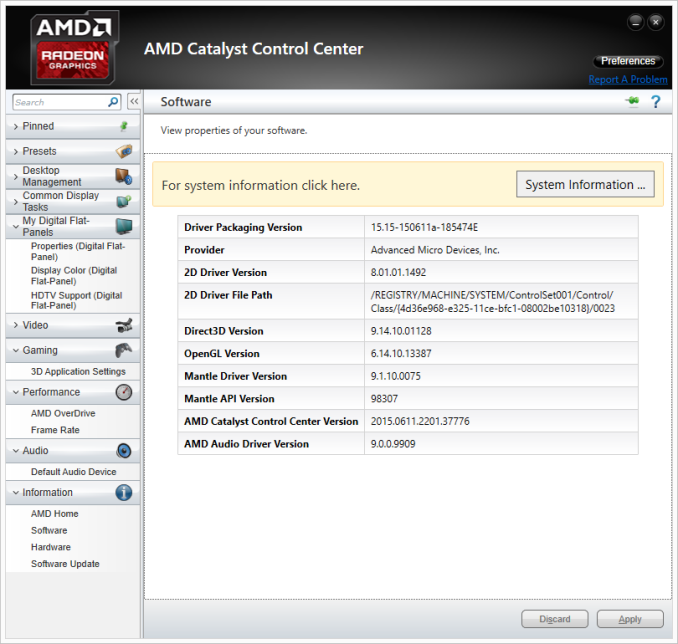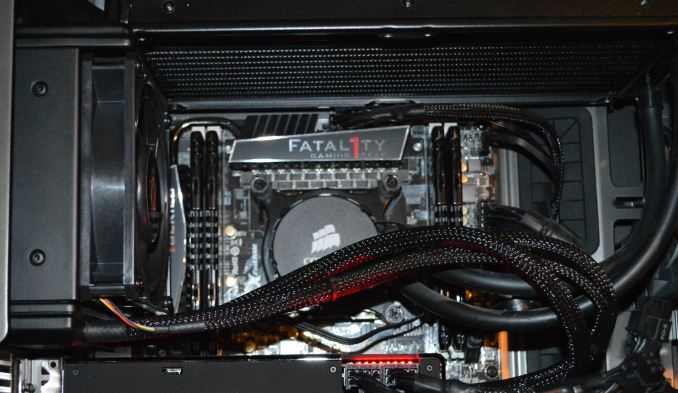The AMD Radeon R9 Fury X Review: Aiming For the Top
by Ryan Smith on July 2, 2015 11:15 AM ESTThe State of Mantle, The Drivers, & The Test
Before diving into our long-awaited benchmark results, I wanted to quickly touch upon the state of Mantle now that AMD has given us a bit more insight into what’s going on.
With the Vulkan project having inherited and extended Mantle, Mantle’s external development is at an end for AMD. AMD has already told us in the past that they are essentially taking it back inside, and will be using it as a platform for testing future API developments. Externally then AMD has now thrown all of their weight behind Vulkan and DirectX 12, telling developers that future games should use those APIs and not Mantle.
In the meantime there is the question of what happens to existing Mantle games. So far there are about half a dozen games that support the API, and for these games Mantle is the only low-level API available to them. Should Mantle disappear, then these games would no longer be able to render at such a low-level.
The situation then is that in discussing the performance results of the R9 Fury X with Mantle, AMD has confirmed that while they are not outright dropping Mantle support, they have ceased all further Mantle optimization. Of particular note, the Mantle driver has not been optimized at all for GCN 1.2, which includes not just R9 Fury X, but R9 285, R9 380, and the Carrizo APU as well. Mantle titles will probably still work on these products – and for the record we can’t get Civilization: Beyond Earth to play nicely with the R9 285 via Mantle – but performance is another matter. Mantle is essentially deprecated at this point, and while AMD isn’t going out of their way to break backwards compatibility they aren’t going to put resources into helping it either. The experiment that is Mantle has come to an end.
This will in turn impact our testing somewhat. For our 2015 benchmark suite we began using low-level APIs when available, which in the current game suite includes Battlefield 4, Dragon Age: Inquisition, and Civilization: Beyond Earth, not counting on AMD to cease optimizing Mantle quite so soon. As a result we’re in the uncomfortable position of having to backtrack on our policies some in order to not base our recommendations on stupid settings.
Starting with this review we’re going to use low-level APIs when available, and when using them makes performance sense. That means we’re not going to use Mantle in the cases where performance has clearly regressed due to a lack of optimizations, but will use it for games where it still works as expected (which essentially comes down to Civ: BE). Ultimately everything will move to Vulkan and DirectX 12, but in the meantime we will need to be more selective about where we use Mantle.
The Drivers
For the launch of the 300/Fury series, AMD has taken an unexpected direction with their drivers. The launch driver for these parts is the Catalyst 15.15 driver, AMD’s next major driver branch which includes everything from Fiji support to WDDM 2.0 support. However in launching these parts, AMD has bifurcated their drivers; the new cards get Catalyst 15.15, the old cards get Catalyst 15.6 (driver version 14.502).
Eventually AMD will bring these cards back together in a later driver release, after they have done more extensive QA against their older cards. In the meantime it’s possible to use a modified version of Catalyst 15.15 to enable support for some of these older cards, but unsigned drivers and Windows do not get along well, and it introduces other potential issues. Otherwise considering that these new drivers do include performance improvements for existing cards, we are not especially happy with the current situation. Existing Radeon owners are essentially having performance held back from them, if only temporarily. Small tomes could be written on AMD’s driver situation – they clearly don’t have the resources to do everything they’d like to at once – but this is perhaps the most difficult situation they’ve put Radeon owners in yet.
The Test
Finally, let’s talk testing. For our benchmarking we have used AMD’s Catalyst 15.15 beta drivers for the R9 Fury X, and their Catalyst 15.5 beta drivers for all other AMD cards. Meanwhile for NVIDIA cards we are on release 352.90.
From a build standpoint we’d like to remind everyone that installing a GPU radiator in our closed cased test bed does require reconfiguring the test bed slightly; a 120mm rear exhaust fan must be removed to make room for the GPU radiator.
| CPU: | Intel Core i7-4960X @ 4.2GHz |
| Motherboard: | ASRock Fatal1ty X79 Professional |
| Power Supply: | Corsair AX1200i |
| Hard Disk: | Samsung SSD 840 EVO (750GB) |
| Memory: | G.Skill RipjawZ DDR3-1866 4 x 8GB (9-10-9-26) |
| Case: | NZXT Phantom 630 Windowed Edition |
| Monitor: | Asus PQ321 |
| Video Cards: | AMD Radeon R9 Fury X AMD Radeon R9 295X2 AMD Radeon R9 290X AMD Radeon R9 285 AMD Radeon HD 7970 NVIDIA GeForce GTX Titan X NVIDIA GeForce GTX 980 Ti NVIDIA GeForce GTX 980 NVIDIA GeForce GTX 780 Ti NVIDIA GeForce GTX 680 NVIDIA GeForce GTX 580 |
| Video Drivers: | NVIDIA Release 352.90 Beta AMD Catalyst Cat 15.5 Beta (All Other AMD Cards) AMD Catalyst Cat 15.15 Beta (R9 Fury X) |
| OS: | Windows 8.1 Pro |













458 Comments
View All Comments
chizow - Monday, July 6, 2015 - link
Oh, and also forgot his biggest mistake was vastly overpaying for ATI, leading both companies on this downward spiral of crippling debt and unrealized potential.chizow - Monday, July 6, 2015 - link
Uh...Bulldozer happened on Ruiz's watch, and he also wasn't able to capitalize on K8's early performance leadership. Beyond that he orchestrated the sale of their fabs to ATIC culminating in the usurious take or pay WSA with GloFo that still cripples them to this day. But of course, it was no surprise why he did this, he traded AMD's fabs for a position as GloFo's CEO which he was forced to resign from in shame due to insider trading allegations. Yep, Ruiz was truly a crook but AMD fanboys love to throw stones at Huang. :Dtipoo - Thursday, July 2, 2015 - link
Nooo please put it back, it was so much better with Anandtech referring to AMD as the taint :PHOOfan 1 - Thursday, July 2, 2015 - link
At least he didn't spell it "perianal"Wreckage - Thursday, July 2, 2015 - link
It's silly to paint AMD as the underdog. It was not that long ago that they were able to buy ATI (a company that was bigger than NVIDIA). I remember at the time a lot of people were saying that NVIDIA was doomed and could never stand up to the might of a combined AMD + ATI. AMD is not the underdog, AMD got beat by the underdog.Drumsticks - Thursday, July 2, 2015 - link
I mean, AMD has a market cap of ~2B, compared to 11B of Nvidia and ~140B of Intel. They also have only ~25% of the dGPU market I believe. While I don't know a lot about stocks and I'm sure this doesn't tell the whole story, I'm not sure you could ever sell Nvidia as the underdog here.Kjella - Thursday, July 2, 2015 - link
Sorry but that is plain wrong as nVidia wasn't just bigger than ATI, they were bigger than AMD. Their market cap in Q2 2006 was $9.06 billion, on the purchase date AMD was worth $8.84 billion and ATI $4.2 billion. It took a massive cash/stock deal worth $5.6 billion to buy ATI, including over $2 billion in loans. AMD stretched to the limit to make this happen, three days later Intel introduced the Core 2 processor and it all went downhill from there as AMD couldn't invest more and struggled to pay interest on falling sales. And AMD made an enemy of nVidia, which Intel could use to boot nVidia out of the chipset/integrated graphics market by not licensing QPI/DMI with nVidia having nowhere to go. It cost them $1.5 billion, but Intel has made back that several times over since.kspirit - Thursday, July 2, 2015 - link
That was pretty savage of Intel, TBH. I'm impressed.Iketh - Monday, July 6, 2015 - link
or you could say AMD purposely finalized the purchase just before Core2 was introduced... after Core2, the purchase would have been impossibleWreckage - Thursday, July 2, 2015 - link
http://money.cnn.com/2006/07/24/technology/nvidia_...AMD was worth $8.5B and ATI was worth $5B at the time of the merger making them worth about twice what NVIDIA was worth at the time ($7B)
In 2004 NVIDIA had a market cap of $2.4B and ATI was at $4.3B nearly twice.
http://www.tomshardware.com/news/nvidias-market-sh...
NVIDIA was the underdog until the combined AMD+ATI collapsed and lost most of their value. They are Goliath brought down by David.